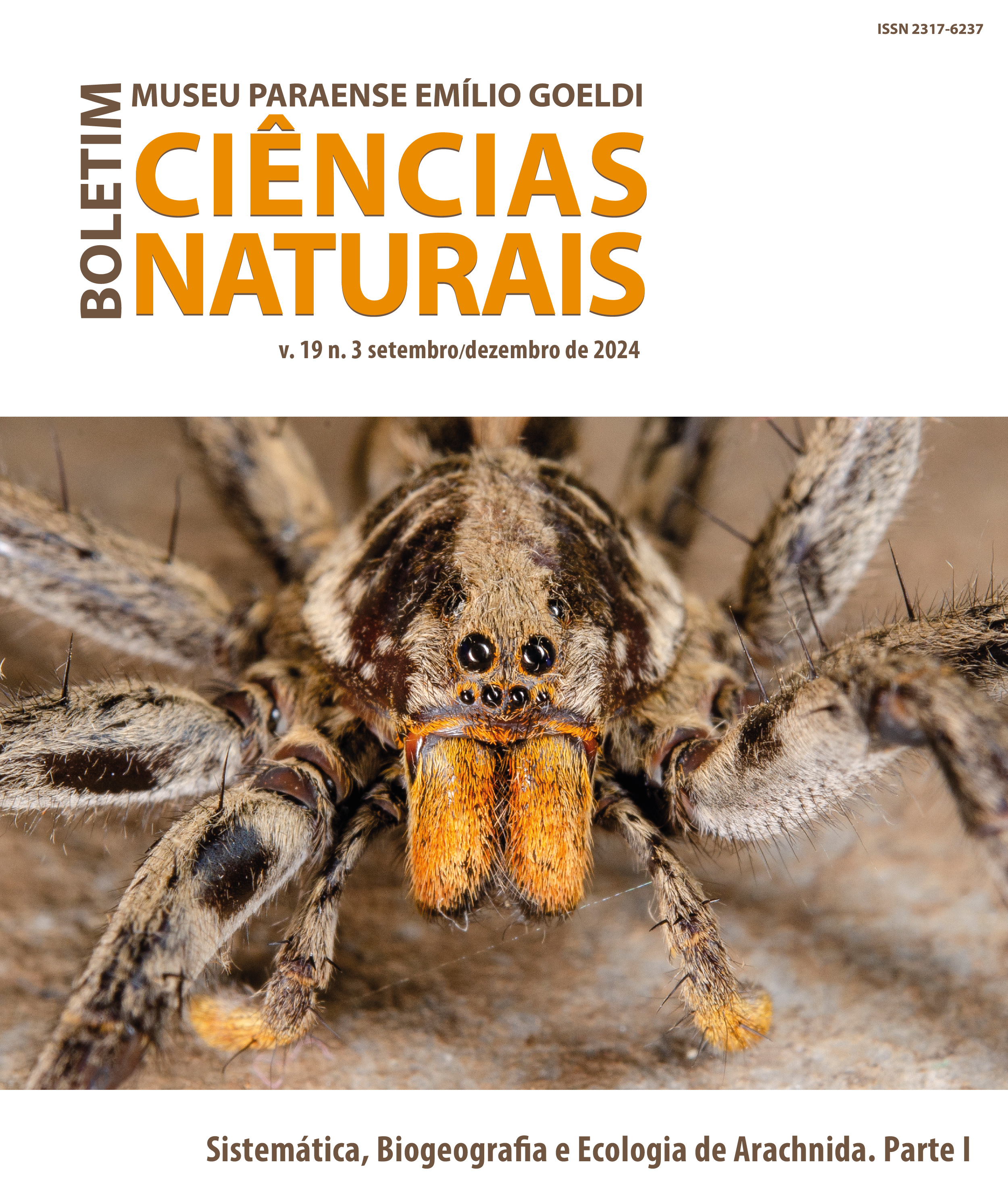Hunting the hunter: evidence of intraguild predation among bark-dwelling pseudoscorpions in the Brazilian savanna
DOI:
https://doi.org/10.46357/bcnaturais.v19i3.969Keywords:
Arachnida, Cerrado biome, Neotropical savanna, Pseudoscorpiones, Species interactionsAbstract
Intraguild predation, in which animals within the same guild prey on each other, is quite common among arachnids, especially dwelling on the ground. While pseudoscorpions can be found on the ground, tree trunks, and canopies, there is limited evidence of predation among pseudoscorpion species in their natural habitats. This study reports predatory interactions among four species of bark-dwelling pseudoscorpions in the Brazilian Cerrado. We observed two species of Victorwithius (Withiidae) (V. similis and V. rufus) opportunistically attacking and feeding on nymphs of Paratemnoides nidificator (Atemnidae). Additionally, Parachernes melanopygus (Chernetidae) acted as a social parasite, feeding on juveniles within colonies. These observations were made in six different regions of the Brazilian Cerrado. In all cases, P. nidificator was placed as the intraguild prey, while the other species acted as intraguild predators. In this system, Paratemnoides colonies may represent a predictable food resource for other pseudoscorpions, especially during the dry season when prey is scarce.
Downloads
Published
Issue
Section
License
Publication means fully assigning and transferring all copyrights of the manuscript to the journal. The Liability Statement and
Assignment of Copyrights will be enclosed with the notice of acceptance. All the authors must sign the document and return it to the journal.








